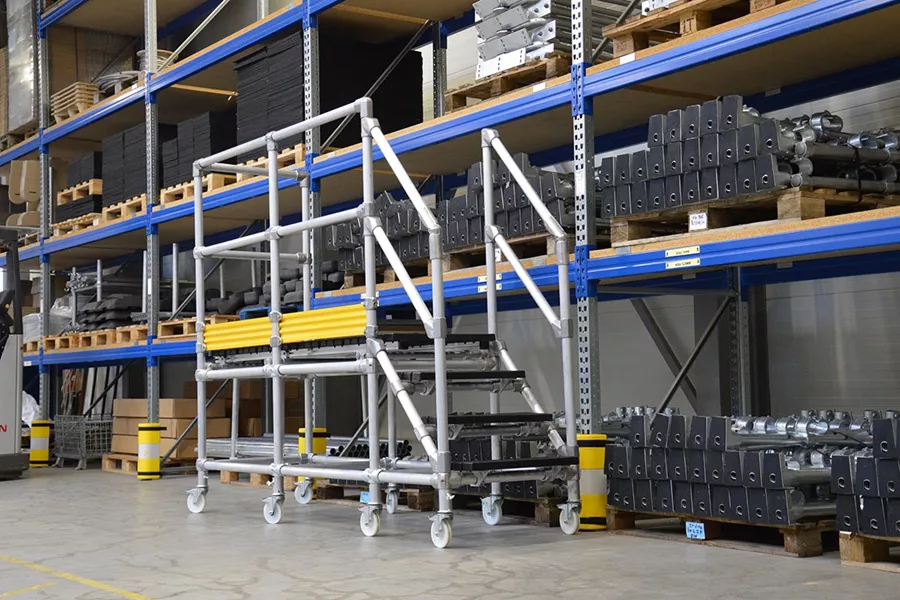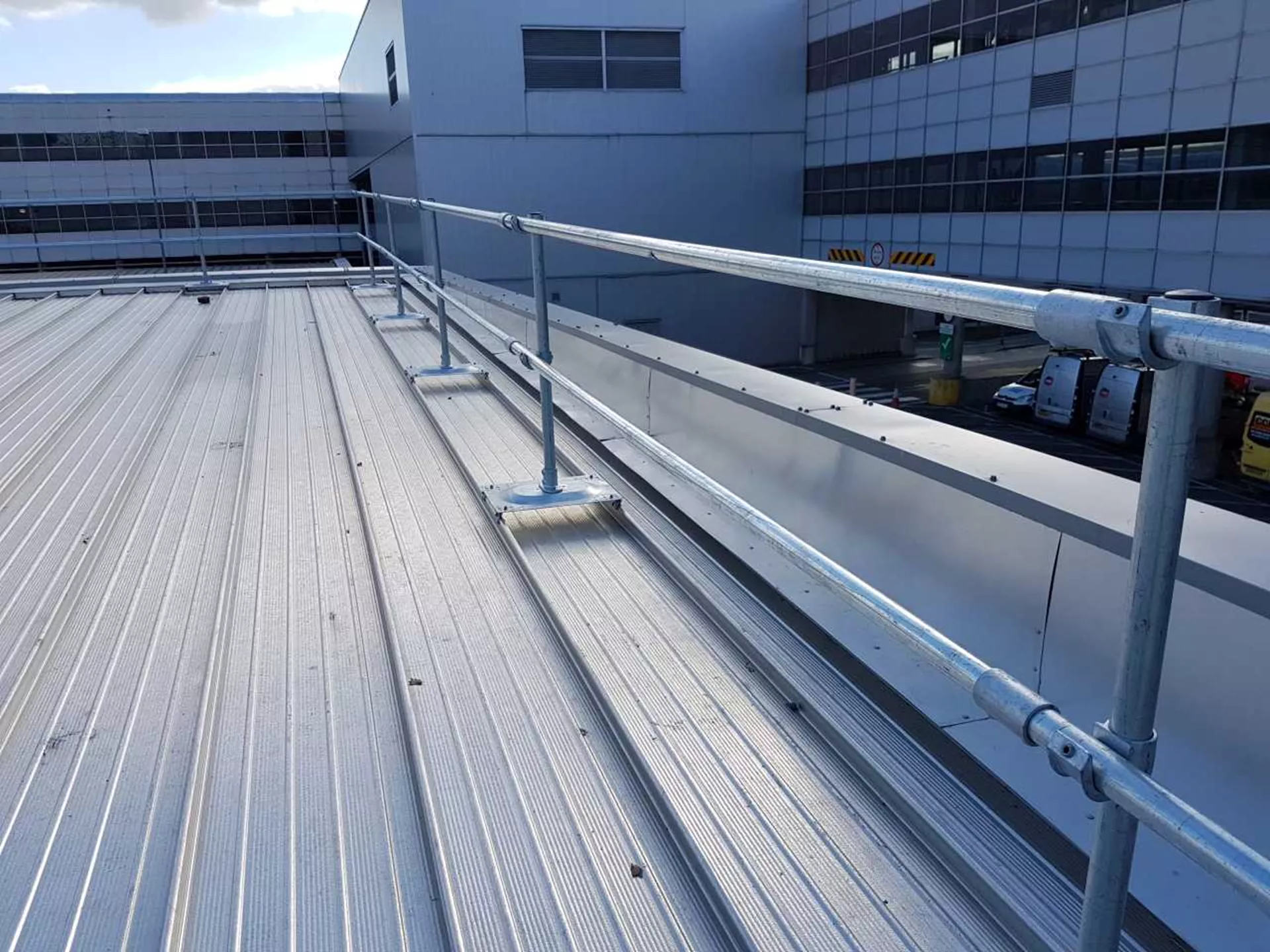

As the New Year unfolds, it's an ideal time for businesses to reassess and innovate in workplace safety. A case in point is a leading national manufacturer who recently contacted Kee Safety for help with a significant safety overhaul. They're transitioning from ladders to stairs for rooftop access across all their facilities, signaling a major shift in industrial safety practices. This initiative is more than an upgrade; it's part of a broader movement that's gaining momentum in the industry, setting new benchmarks for safety and efficiency. Let's investigate the key challenges of using ladders, and help you make an informed decision for your facility.

The Occupational Safety and Health Administration (OSHA) has set forth specific guidelines and standards for ladder use in the workplace. These guidelines include proper ladder selection, inspection before use, correct positioning, and safe climbing practices. Despite these precautions, the inherent risks associated with ladder use remain high. OSHA's statistics show that falls from ladders make up nearly a third of all fall-related deaths in construction (OSHA Publication). This alarming figure underscores the need for safer alternatives, such as stairs, in industrial settings.

One of the fundamental safety rules when using ladders is to maintain three points of contact (two hands and one foot, or two feet and one hand) at all times. This practice is crucial for stability and balance, reducing the risk of falls. However, in an industrial setting, where workers often need to ascend with tools or materials, following this rule becomes challenging. Ladders demand a balancing act, asking of workers to ascend to dizzying heights with only one hand free for support. This high-wire act can be both strenuous and hazardous, adding extra risk to work environments that are already teeming with potential hazards.
Carrying items up a ladder often means compromising on this safety principle, as one hand is typically used to hold the item, leaving only one hand and two feet for support. This not only increases the risk of losing balance but also makes the climb up the more strenuous and hazardous. In contrast, stairs allow workers to use handrails for support and balance, even when carrying tools or materials, thereby adhering more effectively to safety protocols, and reducing the risk of accidents.

Ergonomics plays a crucial role in workplace safety, especially in industrial environments. Ladders, by their very design, pose ergonomic challenges. The act of climbing a ladder requires more physical effort and can lead to muscle strain and fatigue over time. This is particularly concerning in industries where workers are required to climb frequently. Stairs, on the other hand, are designed to match natural human movement, reducing physical strain and the risk of ergonomic injuries.

When it comes to keeping things safe in industrial settings, sticking to OSHA's rules is key. Let's talk about fixed ladders, especially the ones that go more than 24 feet up. OSHA has some specific guidelines here. If your ladder was put up before November 19, 2018, it needs to have something like a personal fall arrest system, a ladder safety setup, or even a cage or well around it (1910.28(b)(9)(i)(A)). For any new ladders added after that date, you've got to have a fall arrest system or a ladder safety system in place (1910.28(b)(9)(i)(B)). And if you're replacing an old ladder or part of it, this is the time to add one of these safety systems to the new section (1910.28(b)(9)(i)(C)). Fast forward to November 18, 2036 – by then, every fixed ladder out there needs to have these safety systems (1910.28(b)(9)(i)(D)).
Now, here's the thing: keeping up with all these rules for ladders can be a bit of a headache, not to mention the costs involved. That's where switching to stairs can make a lot of sense. Stairs are naturally safer, reducing the risk of falls. Plus, they're a simpler, more cost-effective choice in the long run, especially with safety rules getting tighter over time.

Stability and Support
Ease of Use
Reduced Fatigue
High Traffic Areas
Carrying Loads
Emergency Situations

The shift from ladders to stairs not only enhances immediate safety but also contributes to long-term health and productivity. Workers are less likely to experience fatigue, which can lead to increased focus and efficiency. The reduced risk of accidents means fewer workdays lost to injury, a significant factor in overall productivity and cost savings for businesses.
Industry Trends and Future Outlook
The decision by the national manufacturer to switch to stairs is indicative of a broader industry trend towards prioritizing worker safety and efficiency. As more companies recognize the benefits of this approach, it is likely that we will see a continued shift away from ladders and towards safer, more ergonomic solutions like stairs. This trend is not only about compliance with safety standards but also about creating a more sustainable and productive work environment.
With the backing of OSHA statistics and ergonomic considerations, it's evident that stairs offer a safer, more practical solution for industrial rooftop access. As this trend gains traction, it's shaping a future of enhanced safety and efficiency in the workplace. If you have any questions or concerns about enhancing safety at your facility, don't hesitate to reach out to Kee Safety for expert guidance and tailored solutions.

Please fill in your details below and we’ll be in touch shortly.